miR-548ag promotes DPP4 expression in hepatocytes through activation of TLR(7/8)/NF-κB pathway
- PMID: 38424257
- PMCID: PMC11217002
- DOI: 10.1038/s41366-024-01504-8
miR-548ag promotes DPP4 expression in hepatocytes through activation of TLR(7/8)/NF-κB pathway
Abstract
Objective: In our previous study, we identified a notable increase in miR-548ag content after obesity, which contributes to the progression of Type 2 diabetes Mellitus(T2DM) through the up-regulation of Dipeptidyl Peptidase-4(DPP4) expression within the liver. However, the precise molecular mechanisms underlying the upregulation of DPP4 by miR-548ag remain elusive. Mature miRNAs rich in GU sequences can activate the TLR(7/8)/NF-κB signalling pathway, which transcriptionally activates DPP4 expression. Notably, the proportion of GU sequences in hsa-miR-548ag was found to be 47.6%. The study proposes a hypothesis suggesting that miR-548ag could potentially increase DPP4 expression in hepatocytes by activating the TLR(7/8)/NF-κB signalling pathway.
Methods: Male C57BL/6J mice were fed normal chow diet (NCD, n = 16) or high-fat diet (HFD, n = 16) for 12 weeks. For a duration of 6 weeks, NCD mice received intraperitoneal injections of a miR-548ag mimic, while HFD mice and db/db mice (n = 16) were administered intraperitoneal injections of a miR-548ag inhibitor. qRT-PCR and Western Blot were used to detect the expression level of miR-548ag, DPP4 and the activation of TLR(7/8)/NF-κB signalling pathway. HepG2 and L02 cells were transfected with miR-548ag mimic, miR-548ag inhibitor, TLR7/8 interfering fragment, and overexpression of miR-548ag while inhibiting TLR7/8, respectively.
Results: (1) We observed elevated levels of miR-548ag in the serum, adipose tissue, and liver of obese mice, accompanied by an upregulation of TLR7/8, pivotal protein in the NF-κB pathway, and DPP4 expression in the liver. (2) miR-548ag promotes DPP4 expression in hepatocytes via the TLR(7/8)/NF-κB signalling pathway, resulting in a reduction in the glucose consumption capacity of hepatocytes. (3) The administration of a miR-548ag inhibitor enhanced glucose tolerance and insulin sensitivity in db/db mice.
Conclusions: MiR-548ag promotes the expression of DPP4 in hepatocytes by activating the TLR(7/8)/NF-κB signalling pathway. MiR-548ag may be a potential target for the treatment of T2DM.
© 2024. The Author(s).
Conflict of interest statement
Authors declare that they have no competing interests.
Figures


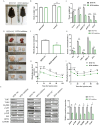
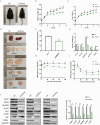
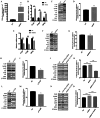
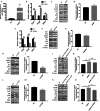

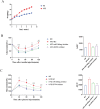
Similar articles
-
Hepatic Glucose Metabolism Disorder Induced by Adipose Tissue-Derived miR-548ag via DPP4 Upregulation.Int J Mol Sci. 2023 Feb 3;24(3):2964. doi: 10.3390/ijms24032964. Int J Mol Sci. 2023. PMID: 36769291 Free PMC article.
-
Exosome-derived miR-548ag drives hepatic lipid accumulation via upregulating FASN through inhibition of DNMT3B.J Lipid Res. 2025 Jun;66(6):100818. doi: 10.1016/j.jlr.2025.100818. Epub 2025 May 6. J Lipid Res. 2025. PMID: 40339699 Free PMC article.
-
DPP4/CD32b/NF-κB Circuit: A Novel Druggable Target for Inhibiting CRP-Driven Diabetic Nephropathy.Mol Ther. 2021 Jan 6;29(1):365-375. doi: 10.1016/j.ymthe.2020.08.017. Epub 2020 Sep 5. Mol Ther. 2021. PMID: 32956626 Free PMC article.
-
Palmitic acid promotes miRNA release from adipocyte exosomes by activating NF-κB/ER stress.Nutr Diabetes. 2024 Sep 13;14(1):75. doi: 10.1038/s41387-024-00334-x. Nutr Diabetes. 2024. PMID: 39271650 Free PMC article.
-
Elevated hepatic DPP4 activity promotes insulin resistance and non-alcoholic fatty liver disease.Mol Metab. 2017 Oct;6(10):1254-1263. doi: 10.1016/j.molmet.2017.07.016. Epub 2017 Aug 4. Mol Metab. 2017. PMID: 29031724 Free PMC article.
Cited by
-
Differential microRNA profiling of the Marshallese population in Arkansas reveals a higher association with chronic diseases.PLoS One. 2025 Aug 11;20(8):e0329321. doi: 10.1371/journal.pone.0329321. eCollection 2025. PLoS One. 2025. PMID: 40788916 Free PMC article.
References
-
- The International Diabetes Federation Diabetes Atlas 2021 prevalence was projected to 2030 and 2045.
-
- Zheng Y, Ley SH, Hu FB. Global aetiology and epidemiology of type 2 diabetes mellitus and its complications. Nat Rev Endocrinol. 2018;14:88–98. - PubMed
Publication types
MeSH terms
Substances
LinkOut - more resources
Full Text Sources
Miscellaneous

